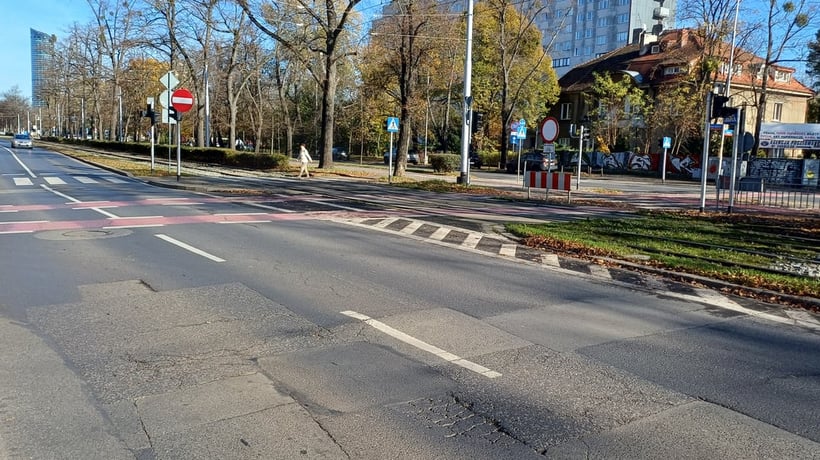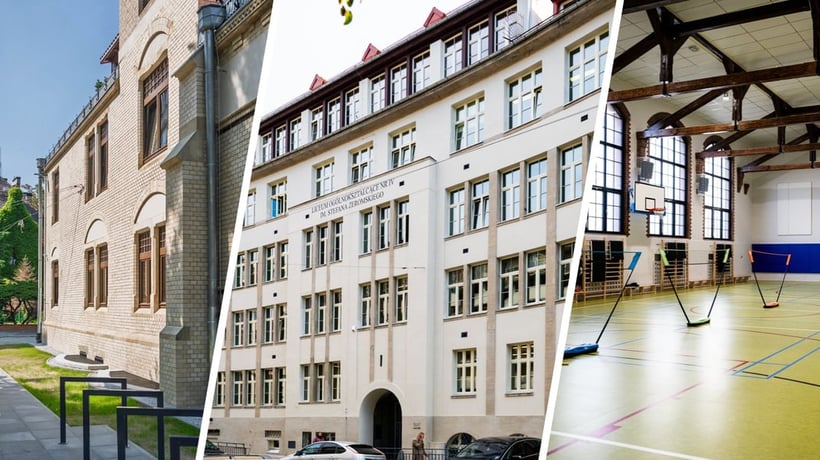The Wrocławskie Inwestycje company has launched a tender procedure related to the construction of the bus and tram route between Sępolno and Swojczyce by sending documents to the European Union today (on 30th August).
The investor will launch a tender for the selection of the construction company as soon as the EU accepts the documentation. From the signing of the contract, the contractor will have two years to complete the investment. ‘It will be a very large infrastructure task involving the rebuilding and construction of the road and track infrastructure,’ announces the President of Wrocławskie Inwestycje Piotr Paś.
Bus & Tram Route to Swojczyce. 14 stops on the two-kilometre route
The length of the Sępolno – Swojczyce Bus & Tram Route is around 2 kilometres. One end is the bus and tram terminus at Sępolno (to be rebuilt), the other is the tram terminus in Swojczyce (to be built).
There will be 14 stops along the route:
- 8 for trams and buses (i.e. double stops),
- 2 for trams only,
- 3 for buses only,
- 1 double-sided stop for trams and buses.
Public transport vehicles will travel mainly along a separate traffic corridor. During this investment, we will use ecological solutions to incorporate green elements into the infrastructure of stops and we will retain groundwater.project manager from Wrocławskie Inwestycje, Andrzej Biegus
The aforementioned green elements include trees on the Swojczyce terminus and plants at stops (mats with a sedum on the roofs of the shelters). There are around 380 trees in the plan. These will include, for example, maples, lime trees, pines and poplars. Plus tens of thousands of shrubs.
Water retention technologies include absorption troughs at stops and a meandering ditch on the terminus.
Intersections, cycle paths and pavements
The construction of the Bus & Tram Route to Swojczyce will require the reconstruction of seven intersections and a large section of Swojczycka Street, as well as a piece of Mickiewicza Street. In addition, a new connector will appear between Marco Polo Street and the Chrobry Bridges at the level of Mydlana; incidentally, such connectors were built along with tracks as part of the planned tram route.
The investment also involves laying out cycle paths (2.7 km) and pavement works (around 6 km). Other elements include park-and-ride parks for 166 cars and for bicycles.
Residents of Wojnów, other eastern housing estates and people from neighbouring communes will have the possibility of leaving their cars here and transferring to public transport to get to the centre quickly.President of Wrocławskie Inwestycje, Piotr Paś
The huge amount of work on the underground infrastructure and above-ground networks cannot be forgotten. It will be necessary to build a few kilometres of waterworks, to rebuild and build several kilometres of a low- and medium-voltage power grid, to take care of sanitary and rainwater systems and to rebuild gas and telecommunications networks.
Co-operation with the Strachocin–Swojczyce–Wojnów housing estate council
WI’s manager Andrzej Biegus declares co-operation with the housing estate council at every stage of the investment in order to reduce the difficulties involved. Wroclaw residents are sure that the traffic jams will become even worse during the construction and detours.
‘Thjs is why we want to participate in the organisation of replacement traffic and to keep in touch with the investor,’ stresses Izabela Folga-Łozińska from the Strachocin–Swojczyce–Wojnów housing estate council. ‘This part of Wroclaw, which is expanding rapidly, has struggled with traffic jams for years, so we have supported the construction of the route since the beginning and hope for its rapid completion,’ he adds.
Stanisław Piątek from the same housing estate council calls the investment a transport revolution. ‘Now we have basically only one access road – Swojczycka. Not everyone wants to use it by driving a car. The traffic is heavy. Some people choose bikes, but they have to ride on the cobblestones or the pavement, so they are waiting for a real cycle path. Some people take a walk to reach the Sępolno terminus. And many people want to use public transport, as can be seen by packed regional trains passing through the Wrocław Swojczyce station.
The car park and the terminus of the planned tram and bus route will be located close to this station.
As you may remember, representatives of the city hall and Saint Hyacinth’s parish council signed an investment agreement in February: the priests give the land, while the city builds a columbarium for future burials.






